Cookbook challenge: Healthy Baking by Jordan Bourke
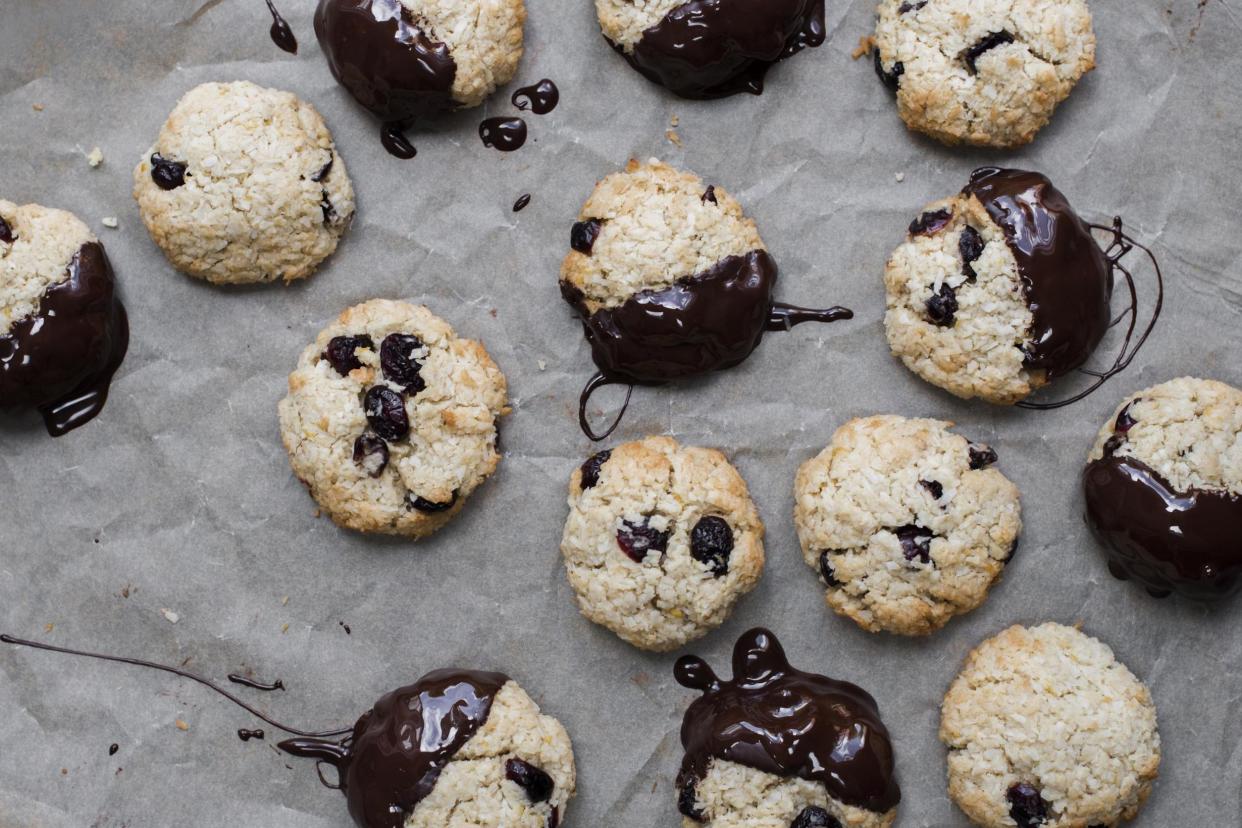
Baking and I haven’t always got on. In the past I’ve made brownies that came out too gooey - yes, brownies can be too gooey - made a cake that burnt, a cake that tasted wonderful but looked so disgusting I’m surprised anyone ate it, biscuits that wouldn’t snap, and bread that’s so hard I’m not even sure the birds wanted it.
So because of that and the fact I’m wary of any cookbooks with ‘healthy’ in the title (given that they often have the potential to include things that don’t taste of much), it was for a few weeks that Jordan Bourke’s new book, Healthy Baking, sat on my shelf before I decided to take a look.
As it happened, these pages actually turned out to be rather a comfort.
‘I want to reclaim the word for what I believe it really means - a healthy approach to food, cooking from scratch, and a return to forgotten skills like bread making and fermentation,’ says Bourke early on, mentioning that there are lots of fats, sugars, complex carbohydrates and even - hold your horses - dairy (or at least for those that want it - Bourke prefers rice, almond or coconut milk). OK, so I’m not leaping over the fence just yet.
His thing here is ‘the use of natural and whole ingredients - by which I mean they have come from the land, sea or animal with as little interference as possible, with no addictives, flavourings or preservatives’. This, the way a lot of people approach cooking, also makes sense. Bourke reminds us he’s ‘not obsessive’ and knows ‘where to draw the line’ when it comes to the reality of being a home baker. We’ll check that as we meander further through the book.
You can make what you will of his suggestion that wheat is not the devil and that the problems surrounding it come more from the fact that we live in a world where many of us consume commercial breads, cereals and ready meals - in any case, I’m inclined to agree with him.
I like the way he writes, the language neither flowery, nor too efficient. Instead it’s communicable, making one want to consider - not rush, but maybe just think about - trying some of the things he’s suggesting. There’s a lovely slowness about it, which I guess is the point - after all, he wants us to take time fermenting things that we might then preserve in the fridge for a while, or slowly make our own sourdough.
Needless to say, the book is not all about baking, and although there are very interesting-looking breads (which naturally I avoided - making my own bread is still off-limits) and some serious bakes - chocolate, cinnamon and pecan babka, for example - that I imagined tackling if I’d had more time, there are a great deal of grain and vegetable dishes that sound right up my street.
Three friendly-sounding ones include roasted carrots with kamut, thyme, hazelnuts and garlic yoghurt; puy lentil and freekah soup with chorizo; and roast fennel, squash, chorizo and basil frittata. In each case, Bourke does stick to his word, regularly telling us we can replace such and such flour or milk with our preferred option.
Overall, this is a book with a straightforward approach that will also encourage you to try a few new things and, while not everything of mine came out tip top, I’ve certainly found some new staples. It’ll be a book I’ll return to when I’m next in the mood to decelerate.
What Victoria made:
Parsnip cake

With parsnips left over from the ferment (below), I embarked on this at the last minute - and it went down a treat with my flatmate tasters. As Bourke says, “the addition of parsnip to a cake always seems to draw gasps, but it is no more unusual than the addition of carrot.” Mine came out slightly undercooked in the middle because I used a deep loaf tin instead of a round cake tin and forgot to adjust my overly hot oven, but the flavour was gorgeous - slightly spicy, with just the right amount of sweetness. Parsnip, I’m coming back for you.
Parsnip and chili ferment

This is a doddle, as my mum would say, as you just chop up parsnips and chilis and shove them into a jar with salty water. It took a few days to ferment properly, but came out well. The salty brine only has a tiny bit of heat, but it shows up the sweetness of the parsnips, which often passes me by when they’re roasted with other veg.
Miso tahini
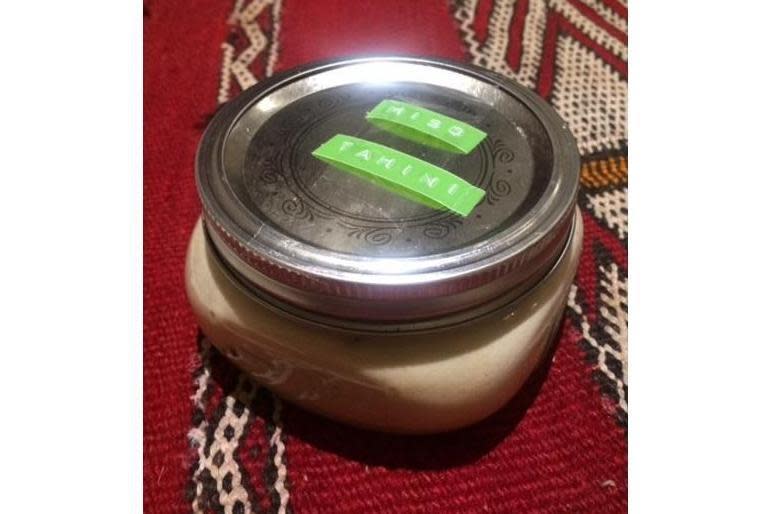
So good that I made this and finished it within 24 hours - and then made it again the following weekend to go over a salad. I have tahini and miso in my cupboard at all times, but hadn’t thought to combine them before, even though that now seems blindingly obvious. Works really well as a dip for cucumber, which is slightly more subtle against the rich miso.
Strawberry, balsamic and thyme jam
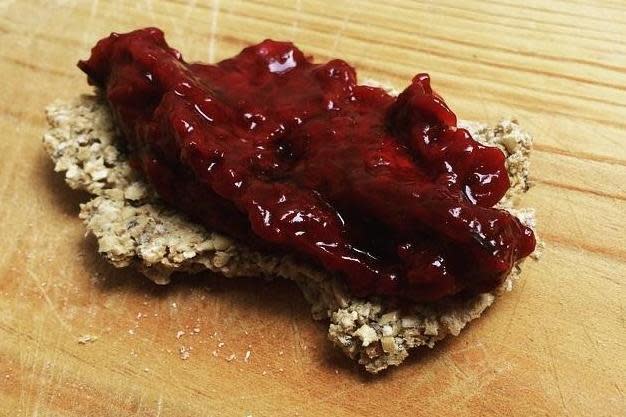
This is sublime - so delicious, with an almost savoury richness. NB: when strawberry season is properly upon us, remember to make triple quantities of this, as it’s frustrating how little jam you get from half a kilo of fruit. Oh, and since I didn’t have coconut palm sugar, I used some coconut flower nectar - like delectable treacle - from a vat given to me by my friend Tem who makes Cold & Blac liqueur.
Balsamic baked aubergine, mushrooms and farro
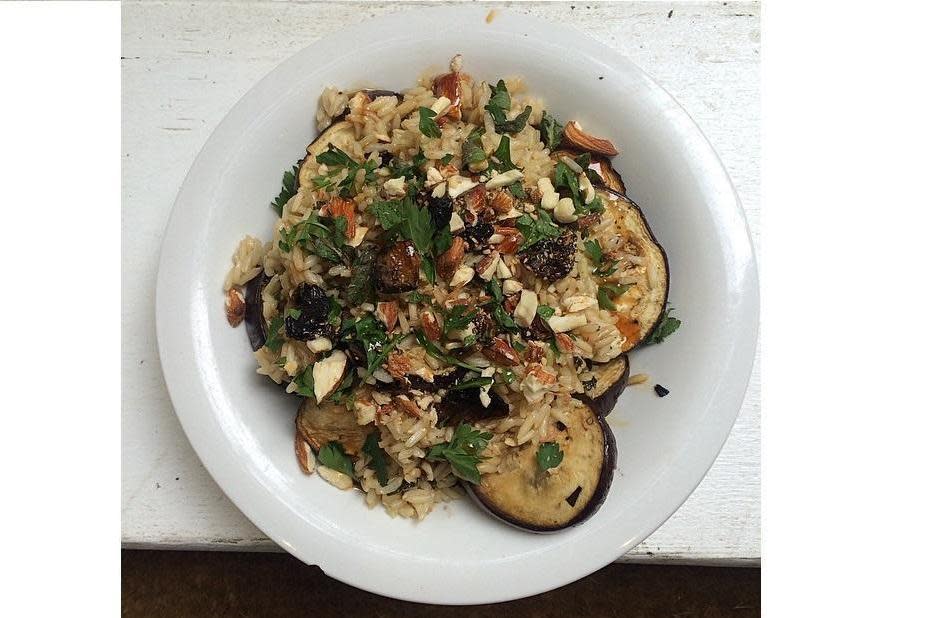
This made an easy, wholesome (I used brown rice instead of farro, as recommended) lunch, but I probably wouldn’t rush back to make it in a hurry unless I had a really silky, syrupy aged balsamic vinegar - as Jordan suggests - as the flavours fall a bit flat even with my slightly decent one.
Sweet potato oats
I had high hopes for this as I’m often playing about with ideas for my morning porridge. Sadly, though, even though oats soaked in milk - I used cow’s milk, because I prefer it to other milks - vanilla extract and cinnamon tasted lovely, the addition of the mash did nothing but clump it up - and was worse the next morning.
Spelt wraps
I’m learning that white spelt flour can result in things turning out very dense, and these wraps were no different. I like them in principle as they’re so simple to do - mix flour + sea salt + olive oil + water then leave them before rolling them out thinly and warming them up - but they’re too tough.
Chia oatcakes
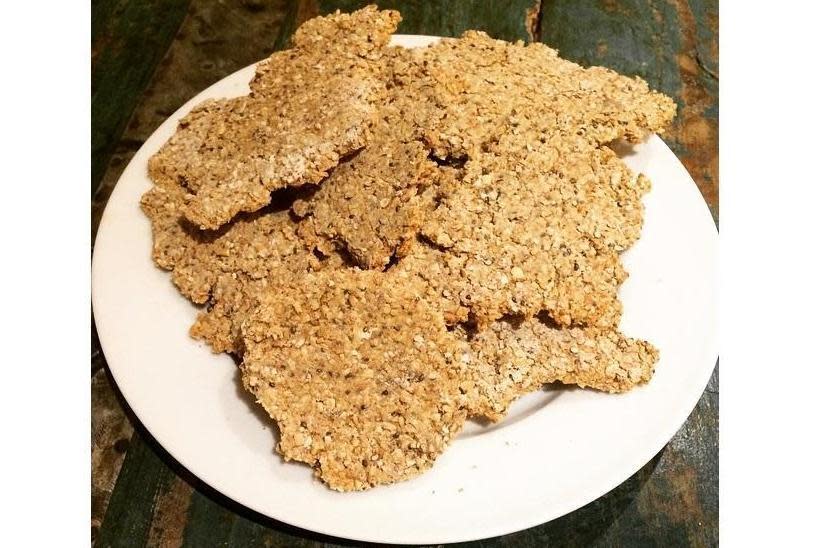
For some reason it’s taken me until now to make my own oatcakes, even though I eat shop-bought ones on a daily basis. And I’m glad I waited, as these spelt ones are fantastic. I couldn’t find fine oatmeal, so used a medium grind instead, but the combination of that with the seeds, salt and olive oil results in a really good hardy biscuit. I like these on their own, or even better as a vehicle for the strawberry and balsamic jam.
Health Baking: Nourishing Breads, Wholesome Cakes, Ancient Grains and Bubbling Ferments by Jordan Bourke is published by Orion as a hardback & eBook (£20/£10.99).
Follow Victoria Stewart on Twitter @vicstewart

 Yahoo News
Yahoo News 
